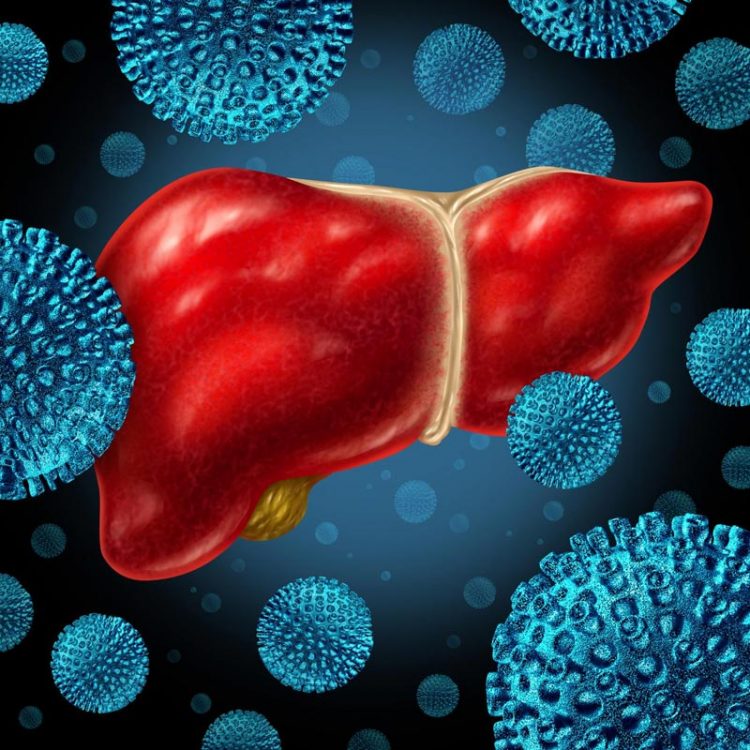New drug reduces transplant and mortality rates significantly in patients with hepatitis C

Patients with hepatitis C who suffer from advanced stages of liver disease have renewed hope, thanks to findings by researchers who have discovered that a new drug significantly reduces their risk of death and need for transplantation. Credit: Intermountain Medical Center.
The research team, led by clinical researchers at Intermountain Healthcare's Intermountain Medical Center in Salt Lake City, studied nearly 1,900 hep C patients and found that the number of patients needing transplants was reduced by 40 percent after they were given a regimen of the drug, sofosbuvir.
Results of the study will be presented at the 2017 International Joint Congress of ILTS, ELITA & LICAGE in Prague, Czech Republic, on Friday, May 26, 2017.
About 3.3 million people in the United States have chronic hepatitis C infection, which causes inflammation of the liver and eventually leads to serious liver problems like cirrhosis, which is a late stage of scarring (fibrosis) of the liver caused by many forms of liver diseases and conditions, such as hepatitis and chronic alcoholism.
Researchers studied longitudinal data to learn the impact sofosbuvir had in treating patients with advanced stages of cirrhosis. They compared the outcomes of 1,857 patients prior to the United States Food and Drug Administration's approval of sofosbuvir in Dec. 2013 with 623 similar patients who were treated with sofosbuvir after approval of the drug.
“Prior to FDA approval of sofosbuvir, patients with the most advanced stages of cirrhosis either died from their disease or ended up receiving a transplant,” said Michael Charlton, MD, lead researcher from Intermountain Healthcare's Intermountain Medical Center Transplant Program, and current president of the International Liver Transplantation Society.
“We found that by treating those patients, who were on the verge of needing a transplant, with sofosbuvir-based therapies, we greatly reduced the liver transplant and mortality rates.” Only three percent of patients on sofosbuvir ended up needing a transplant, compared to ovder 40% of untreated patients.
Data used in the study included an integrated database of four separate, prospective, multicenter, multinational randomized controlled clinical trials of sofosbuvir-based therapies in patients with advanced stages of cirrhosis, and compared them with patients who were on the United Network for Organ Sharing (UNOS) waitlist for a liver transplant between 2008-2013.
“We found the sicker a patient was, the more benefit they experienced by using sofosbuvir,” said Dr. Charlton. “However, many people around the world who might benefit most from this therapy don't have access to it because the regulatory authorities haven't felt it safe for use in patients with advanced stages of liver disease due to hepatitis C. Our research shows the benefits of this drug include significantly improving the health of even the sickest patients, allowing them to return to their normal life sooner.”
Study authors conclude the study by recommending that treatment of the hepatitis C virus using sofosbuvir should be considered in all patients with cirrhosis, even those in advanced stages of the liver disease.
###
Members of the Intermountain Medical Center Liver Transplantation Program involved in the study include Li Dong; Michael Leise; Richard Gilroy, MD; Jake Krong; Anu Osinusi; Michael P. Curry; Michael Manns; Nezam Afdhal; Diana M. Brainard; and Michael Charlton, MD.
Media Contact
All latest news from the category: Statistics
Newest articles

Superradiant atoms could push the boundaries of how precisely time can be measured
Superradiant atoms can help us measure time more precisely than ever. In a new study, researchers from the University of Copenhagen present a new method for measuring the time interval,…

Ion thermoelectric conversion devices for near room temperature
The electrode sheet of the thermoelectric device consists of ionic hydrogel, which is sandwiched between the electrodes to form, and the Prussian blue on the electrode undergoes a redox reaction…

Zap Energy achieves 37-million-degree temperatures in a compact device
New publication reports record electron temperatures for a small-scale, sheared-flow-stabilized Z-pinch fusion device. In the nine decades since humans first produced fusion reactions, only a few fusion technologies have demonstrated…


















